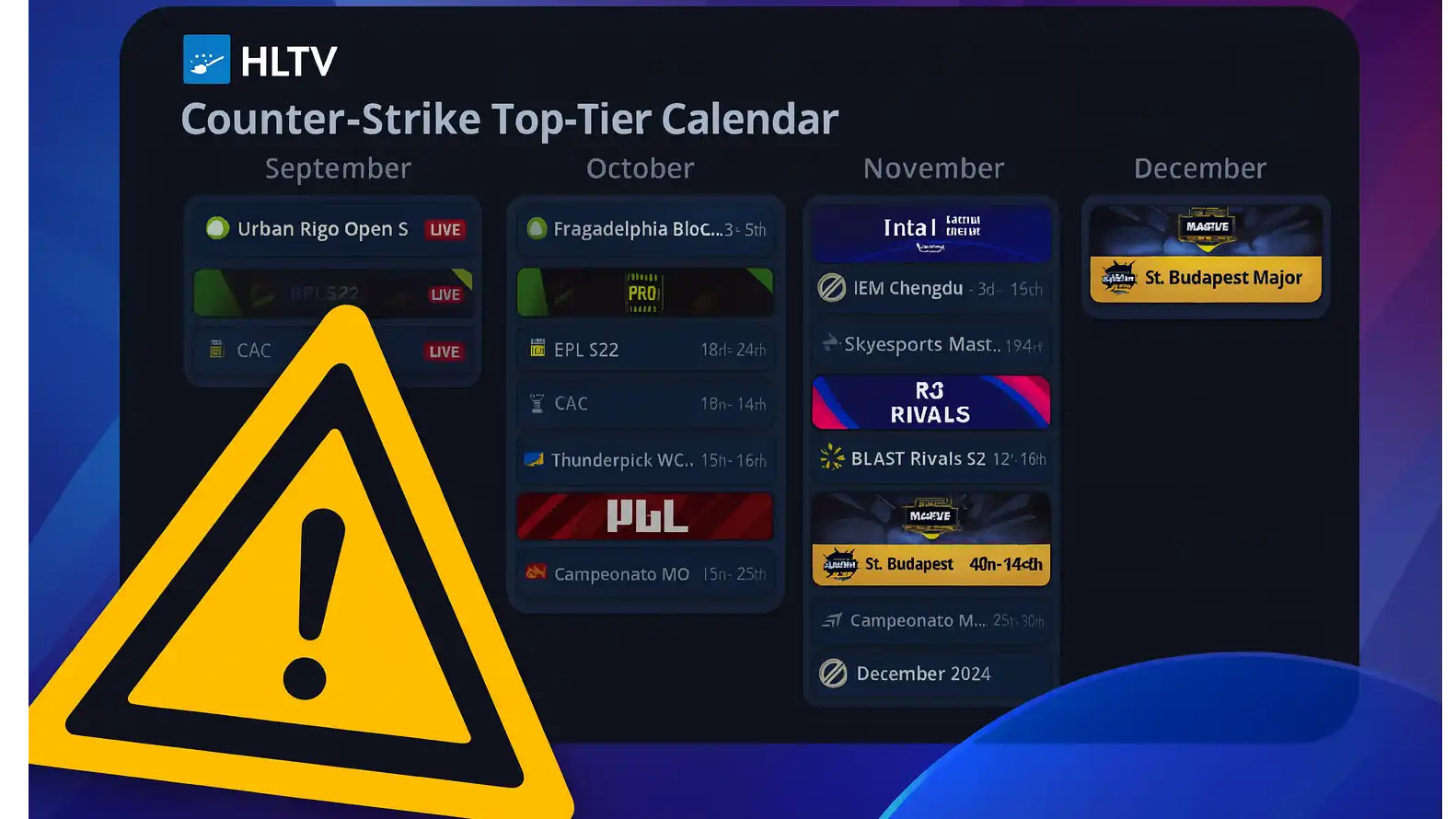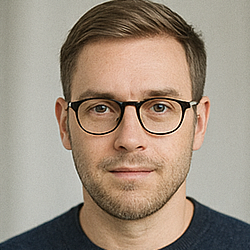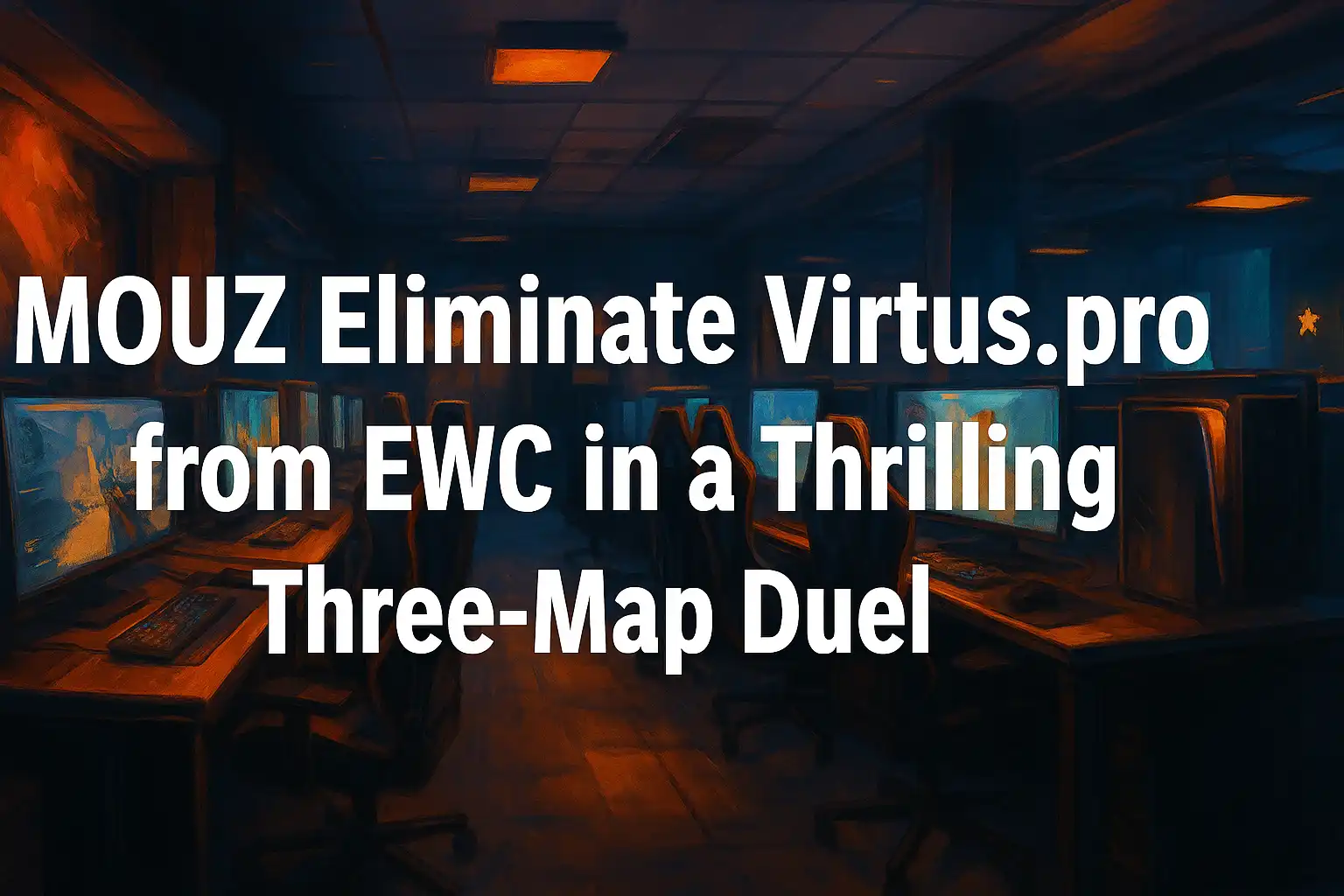Too much Counter-Strike? HLTV’s warning shot lands as calendar strain reshapes the season

Too much Counter-Strike? HLTV’s warning shot lands as calendar strain reshapes the season
HLTV’s latest editorial, “The dangers of too much Counter-Strike,” argues that the game’s biggest long-term risk isn’t a rival title or a single botched update—it’s the relentless, year-round tournament treadmill that erodes meaning, exhausts fans, and pushes teams into increasingly defensive scheduling. The piece asks a blunt question: will the endless stream of events burn out the same audience that sustains the scene?
A calendar that never sleeps
Open HLTV’s events page on any given week and the problem is visible at a glance: multiple studio events, online cups, and regional circuits run simultaneously, with LANs stacked on top of qualifiers and “must-play” rating events. At the time of writing, EPL S22, CCT series in two regions, Fragadelphia Blocktober, and Circuit X were all live or overlapping—hardly an outlier for 2025. For a casual or even dedicated fan, keeping up with storylines is a full-time job; for teams, choosing what not to attend becomes its own strategic discipline.
When opting out becomes the rational choice
One of the editorial’s strongest signals that oversupply is real: elite teams are starting to walk away from big paydays because the trade-off (travel, practice disruption, form risk) is too steep. HLTV recently reported that a majority of the top-10 plan to skip PGL Masters Bucharest despite a $1.25M prize pool and a date tweak meant to ease conflicts; the highest-ranked confirmed team at publication was Aurora, not a perennial tier-one title favorite. That’s a remarkable inversion of prestige economics—and a loud calendar alarm bell.
It isn’t just Europe’s elite making calculus calls. Team Liquid withdrew from Fragadelphia Blocktober, citing a player’s health, limited practice, and potential ranking effects among the reasons—an unusually transparent window into how stacked weeks can punish even legacy organizations for “just playing more CS.” (A North American report the same day echoed the health explanation.)
The VRS squeeze: points, prestige, and perverse incentives
Layered on top of quantity is the Valve Regional Standings (VRS) system, whose points influence Major invites. Tournament organizers understandably chase VRS eligibility; teams feel compelled to chase the points. The result is a constant pressure to be everywhere, even when the marginal storyline value of yet another studio event is low. While Valve has iterated on the model—most notably by removing multi-region duplication—the gravitational pull remains: play more, or risk slipping down the seeding ladder.
Fan fatigue is real—even if debates rage
HLTV’s editorial isn’t the first to surface unease. Broader community threads reflect a split sentiment: some argue that too many tournaments dilute anticipation and make schedules confusing, while others counter that the spread of event tiers creates variety and lets different teams shine when the very top skip. But even those defending the volume concede that few events per year truly gather every heavyweight—which, by definition, fragments attention.
Format inflation: a second-order problem
A crowded calendar also encourages format bloat—more matches to justify production weeks and sponsor slots. HLTV separately called out six-team playoff brackets (two “quarterfinals” feeding seeds already through to semis) as a structure that pads stage time without necessarily improving competitive merit. It’s a symptom of the same disease: when every week is a show, every show wants more show.
What gets lost when everything is “live”
The editorial’s core warning is emotional as much as logistical: if viewers can tune into a high-stakes broadcast every weekend, the specialness that made Counter-Strike era-defining—weeks-long story arcs that build into must-watch arenas—starts to blur. The danger isn’t a single flop but a creeping desaturation: great plays that don’t register, trophies that don’t distinguish themselves, and a fanbase that learns to skim rather than care. HLTV frames this not as alarmism, but as stewardship: a scene this mature needs better pacing to keep its heart rate.
What a healthier 2026 could look like (reading between the lines)
The editorial stops short of prescribing a hard calendar cap, but the adjacent reporting points toward practical levers:
-
Fewer date collisions among A-/S-tier events so elite rosters don’t have to choose between prestige and points. (Bucharest’s struggles, even after a date shift, show how hard this is in practice.)
-
Clearer VRS guardrails so teams aren’t incentivized to chase every last cup; Valve’s willingness to tune the model (e.g., one-region representation) suggests room for further refinements.
-
Format discipline at the top end—eschewing bracket padding and protecting match quality over match quantity.
-
Transparent health protocols and schedule buffers that make withdrawals for medical reasons less disruptive and less stigmatized. (Liquid’s decision and candid explanation were a model of how to handle this.)
The line HLTV draws
Counter-Strike’s resilience is built on consistency (the game) and scarcity (the moments). HLTV’s piece is ultimately a call to coordination—between Valve, TOs, teams, and players—to ensure the sport’s calendar creates anticipation rather than apathy. The warning isn’t that Counter-Strike is in crisis; it’s that the ecosystem has matured to a point where more is no longer always better. With the final months of 2025 already jammed and 2026 dates being inked, the next few scheduling decisions will tell us whether the scene can keep its foot on the gas without burning out the engine.
Sources: HLTV editorial on schedule saturation; HLTV events calendar snapshot; report on top-10 teams skipping PGL Masters Bucharest; HLTV and Dust2.us coverage of Liquid’s Fragadelphia withdrawal; BLAST explainer and HLTV update on VRS; HLTV editorial on six-team playoff brackets.
Too much Counter-Strike? HLTV’s warning shot lands as calendar strain reshapes the season
HLTV’s latest editorial, “The dangers of too much Counter-Strike,” argues that the game’s biggest long-term risk isn’t a rival title or a single botched update—it’s the relentless, year-round tournament treadmill that erodes meaning, exhausts fans, and pushes teams into increasingly defensive scheduling. The piece asks a blunt question: will the endless stream of events burn out the same audience that sustains the scene?
A calendar that never sleeps
Open HLTV’s events page on any given week and the problem is visible at a glance: multiple studio events, online cups, and regional circuits run simultaneously, with LANs stacked on top of qualifiers and “must-play” rating events. At the time of writing, EPL S22, CCT series in two regions, Fragadelphia Blocktober, and Circuit X were all live or overlapping—hardly an outlier for 2025. For a casual or even dedicated fan, keeping up with storylines is a full-time job; for teams, choosing what not to attend becomes its own strategic discipline.
When opting out becomes the rational choice
One of the editorial’s strongest signals that oversupply is real: elite teams are starting to walk away from big paydays because the trade-off (travel, practice disruption, form risk) is too steep. HLTV recently reported that a majority of the top-10 plan to skip PGL Masters Bucharest despite a $1.25M prize pool and a date tweak meant to ease conflicts; the highest-ranked confirmed team at publication was Aurora, not a perennial tier-one title favorite. That’s a remarkable inversion of prestige economics—and a loud calendar alarm bell.
It isn’t just Europe’s elite making calculus calls. Team Liquid withdrew from Fragadelphia Blocktober, citing a player’s health, limited practice, and potential ranking effects among the reasons—an unusually transparent window into how stacked weeks can punish even legacy organizations for “just playing more CS.” (A North American report the same day echoed the health explanation.)
The VRS squeeze: points, prestige, and perverse incentives
Layered on top of quantity is the Valve Regional Standings (VRS) system, whose points influence Major invites. Tournament organizers understandably chase VRS eligibility; teams feel compelled to chase the points. The result is a constant pressure to be everywhere, even when the marginal storyline value of yet another studio event is low. While Valve has iterated on the model—most notably by removing multi-region duplication—the gravitational pull remains: play more, or risk slipping down the seeding ladder.
Fan fatigue is real—even if debates rage
HLTV’s editorial isn’t the first to surface unease. Broader community threads reflect a split sentiment: some argue that too many tournaments dilute anticipation and make schedules confusing, while others counter that the spread of event tiers creates variety and lets different teams shine when the very top skip. But even those defending the volume concede that few events per year truly gather every heavyweight—which, by definition, fragments attention.
Format inflation: a second-order problem
A crowded calendar also encourages format bloat—more matches to justify production weeks and sponsor slots. HLTV separately called out six-team playoff brackets (two “quarterfinals” feeding seeds already through to semis) as a structure that pads stage time without necessarily improving competitive merit. It’s a symptom of the same disease: when every week is a show, every show wants more show.
What gets lost when everything is “live”
The editorial’s core warning is emotional as much as logistical: if viewers can tune into a high-stakes broadcast every weekend, the specialness that made Counter-Strike era-defining—weeks-long story arcs that build into must-watch arenas—starts to blur. The danger isn’t a single flop but a creeping desaturation: great plays that don’t register, trophies that don’t distinguish themselves, and a fanbase that learns to skim rather than care. HLTV frames this not as alarmism, but as stewardship: a scene this mature needs better pacing to keep its heart rate.
What a healthier 2026 could look like (reading between the lines)
The editorial stops short of prescribing a hard calendar cap, but the adjacent reporting points toward practical levers:
-
Fewer date collisions among A-/S-tier events so elite rosters don’t have to choose between prestige and points. (Bucharest’s struggles, even after a date shift, show how hard this is in practice.)
-
Clearer VRS guardrails so teams aren’t incentivized to chase every last cup; Valve’s willingness to tune the model (e.g., one-region representation) suggests room for further refinements.
-
Format discipline at the top end—eschewing bracket padding and protecting match quality over match quantity.
-
Transparent health protocols and schedule buffers that make withdrawals for medical reasons less disruptive and less stigmatized. (Liquid’s decision and candid explanation were a model of how to handle this.)
The line HLTV draws
Counter-Strike’s resilience is built on consistency (the game) and scarcity (the moments). HLTV’s piece is ultimately a call to coordination—between Valve, TOs, teams, and players—to ensure the sport’s calendar creates anticipation rather than apathy. The warning isn’t that Counter-Strike is in crisis; it’s that the ecosystem has matured to a point where more is no longer always better. With the final months of 2025 already jammed and 2026 dates being inked, the next few scheduling decisions will tell us whether the scene can keep its foot on the gas without burning out the engine.

.webp)

